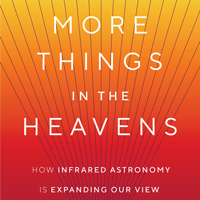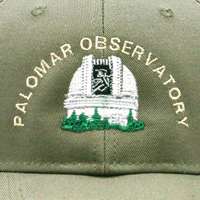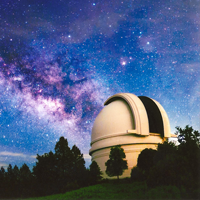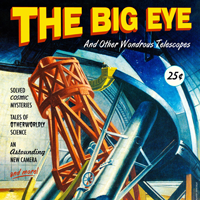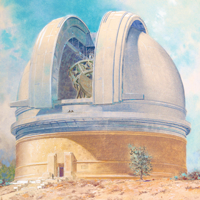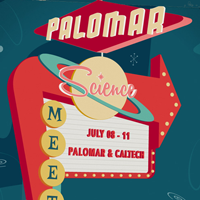In this issue

No. 10
Summer 2022
NGPS Update
By Lin Yan (Caltech)
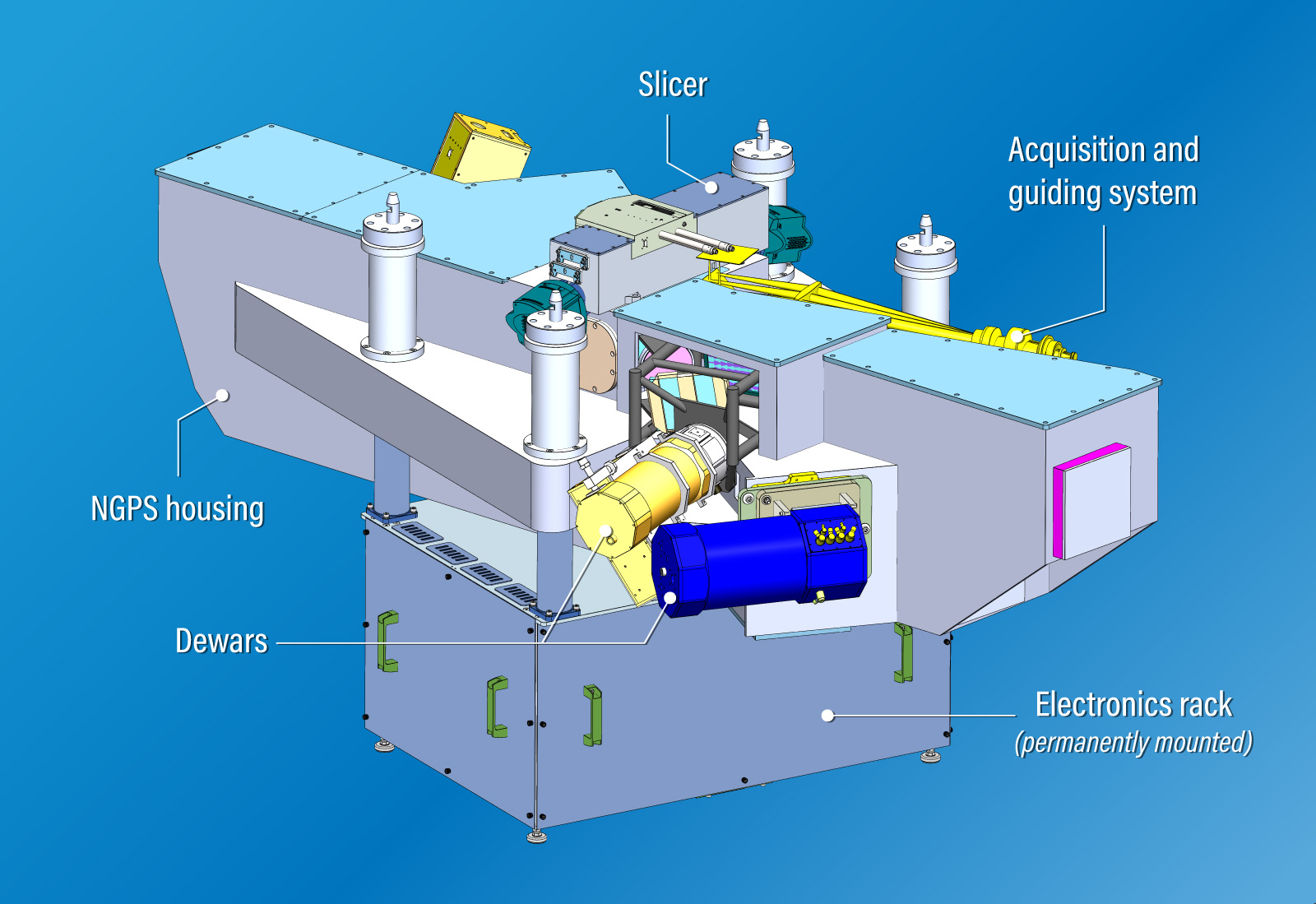
Graphic illustration of the NGPS system with various major components. The bottom light blue box is the electronic rack. The dark blue tube shows the R & I spectrograph channel and the yellow tube is the U & G channel. On the top sits the slicer integrated with the calibration unit. The preliminary designs for the spectrograph channels and the calibration unit have been approved for manufacturing. The electronic rack design is pending review. (R. Bertz/Caltech)
The Next Generation Palomar Spectrograph (NGPS) has achieved several major development milestones this year. On May 6, 2022, the science board for the NGPS project met virtually and discussed the status of the project and the path to commissioning in mid-2023. The meeting attendees included members from COO and NIAOT, as well as representatives from Yale University and JPL. The project’s status report presented the following accomplishments:
- The NGPS calibration unit design has successfully gone through its preliminary review at the end of January 2022. Overall, the review committee found that the preliminary design was good and has met all the specifications required for the application.
- The slicer and the calibration subsystems are now integrated. The optical designs for all of the spectrographs—R, I & G and U-channels—and the dichroic tree have been reviewed and approved for manufacturing. These subsystems are being built by NIAOT, our project partner in China.
- The preliminary design for the electronics rack was also completed and a design review is scheduled for July 6, 2022. The NIAOT and Caltech engineers are now collaborating on the mechanical design using the Caltech Solid Works Vault.
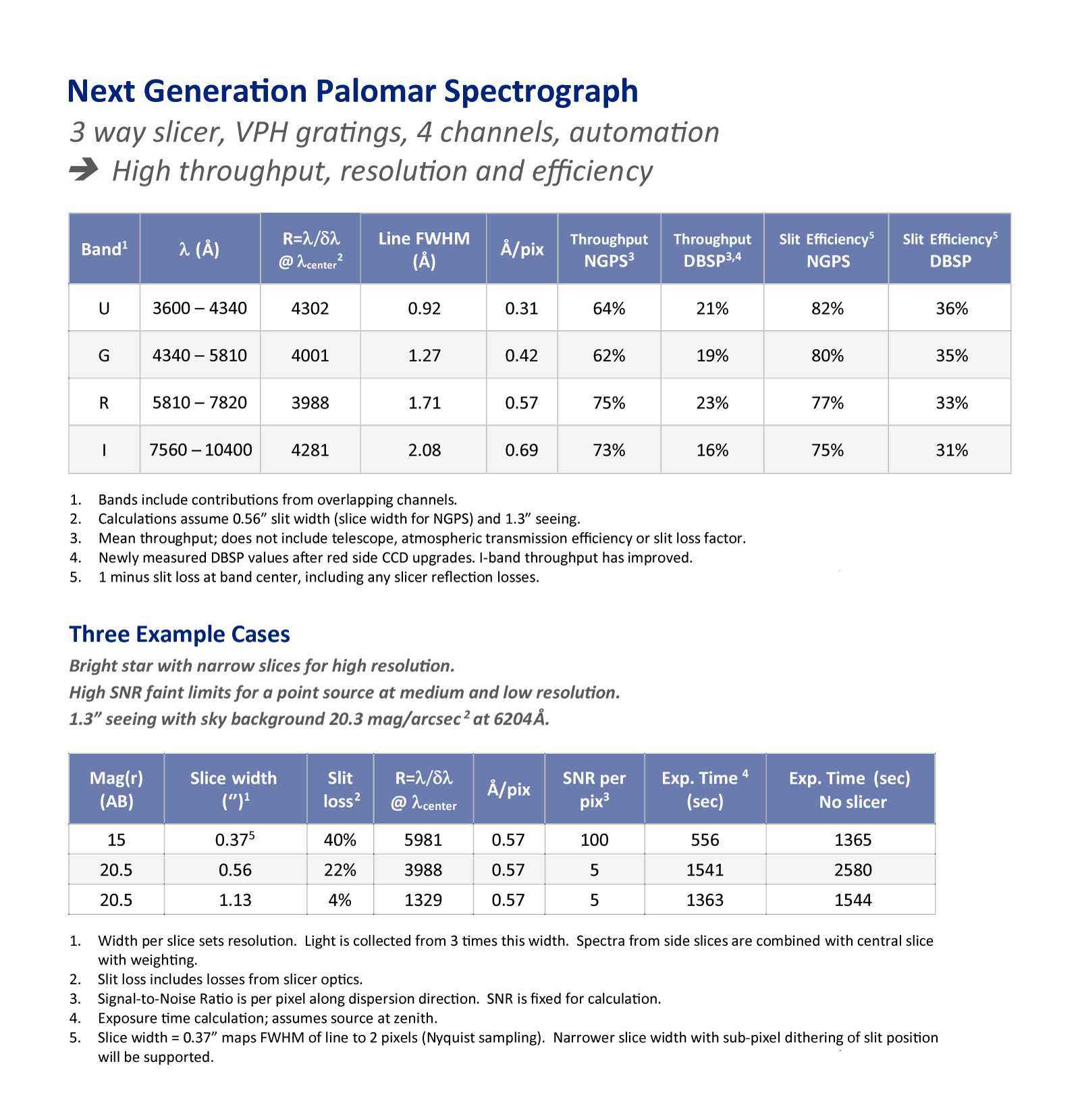
NGPS prospectus, summarizing the capabilities and sensitivities of the instrument, as well as comparison with DBSP. This prospectus aims to provide the user community with an overview of the instrument’s expected performance. The final sensitivity numbers will be confirmed during the commissioning phase. Open as PDF. (L. Yan/C. Shapiro)
The May meeting also presented the broad schedule for the NGPS project. It is anticipated that the first light for the NGPS R & I channel will be the first week of May 2023, with the decommissioning of DBSP tentatively scheduled for August 1, 2023. The first light for the NGPS U & G channel is expected to be on January 3, 2024.
The NGPS commission will be led by COO astronomer Christoffer Fremling. The commissioning activities for all subsystems have been planned and documented. The targets for commissioning observations will be chosen to cover the full range of NGPS observing modes as well as all of the science topics.
The NGPS project will provide an Exposure Time Calculator (ETC) to improve the observing efficiency. The real time broad band photometry taken by the Acquisition and Guiding Camera will support the ETC prediction. Finally, there will be a QuickLook data reduction pipeline available for real-time validation of the observation. This software will be interfaced with a GUI for visual display. The NGPS QuickLook software is based on the similar tool for DBSP (see the news article below).
DBSP QuickLook
By Christoffer Fremling (Caltech)
COO has deployed a new software package—DBSP QuickLook—on observatory computers. This tool will allow observers using DouBle SPectrograph (DBSP) to quickly reduce the data in real time, display and visually examine the 1D spectra. DBSP QuickLook is a part of the development effort from the Next Generation Palomar Spectrograph (NGPS), jointly built by COO and NIAOT in China. This DBSP QuickLook package is an element from a larger DBSP pipeline adaptation of the PypeIt spectroscopy reduction framework.
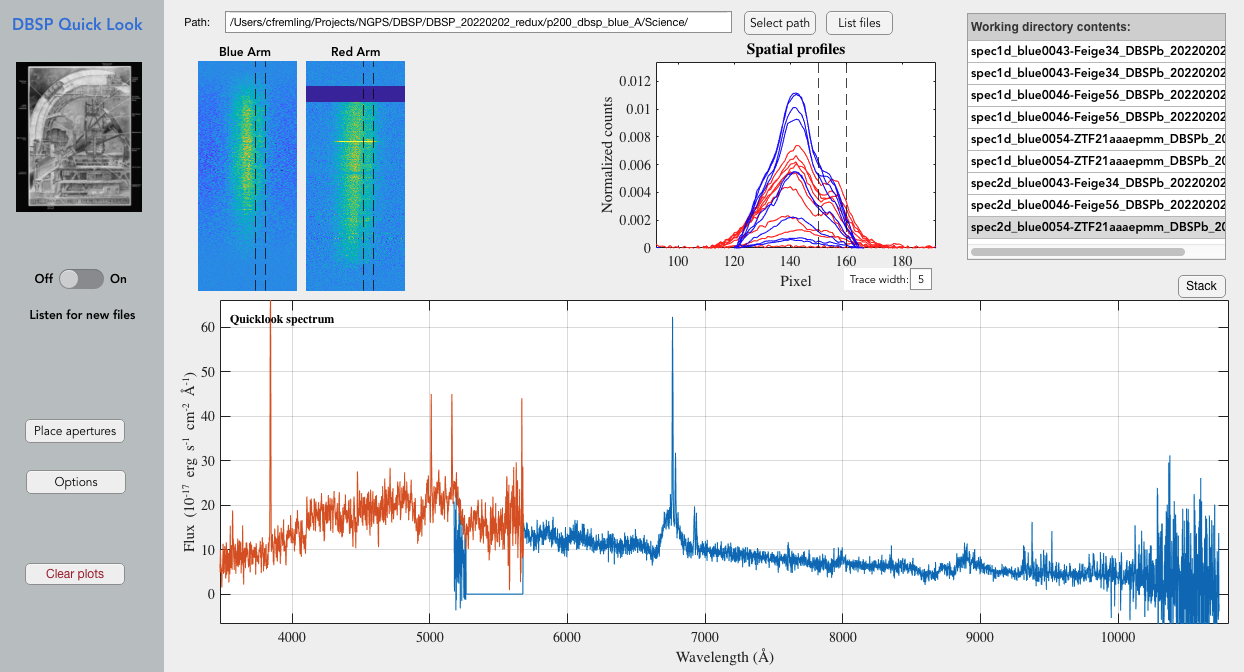
The DBSP QuickLook GUI allows easy inspection of the two-dimensional data, the spatial profiles of the spectral traces present in the data, and the extracted one-dimensional spectra. The spatial position and width of the trace that is extracted can easily be adjusted. (C. Fremling/Caltech)
DBSP QuickLook will have a graphical user interface (GUI). The entire software system will be made available through a separate VNC connection for remote observers, and on a separate screen for on-site observers. QuickLook can be set up to automatically and quickly (in < 15 seconds per spectrum) perform basic data reduction while new observations are carried out with DBSP.
The data reduction steps to be performed include: bias subtraction, flat-fielding, cosmic-ray rejection, two-dimensional sky subtraction, wavelength calibration using an archived wavelength solution for that specific grism setting, and flux calibration using an archived sensitivity function. One-dimensional spectra (at adjustable spatial trace positions) will be automatically displayed on the QuickLook GUI. The adjacent figure illustrates the functionalities of the DBSP QuickLook GUI interface for both spectral extraction and display.
If you are interested in trying out the QuickLook capability on your next observing run, please contact Christoffer Fremling at fremling@caltech.edu.
Native Americans Name Asteroid 'Ayló'chaxnim or “Venus Girl”
By Whitney Clavin
On 7 June 2022, members of the Pauma band (part of the Luiseño or Payómkawichum indigenous peoples) gathered at Palomar to celebrate the naming of the first known asteroid to circle entirely within the orbit of Venus. The asteroid was originally discovered in 2020 by the Zwicky Transient Facility (ZTF). Sometime after its discovery, the ZTF team decided to ask the Pauma band, whose ancestral lands include the mountainous region where the observatory is located, if they would like to bestow the new cosmic find with a name of their choosing. Ultimately, the indigenous group chose to name the asteroid 'Ayló'chaxnim, which means “Venus girl” in the Luiseño language.
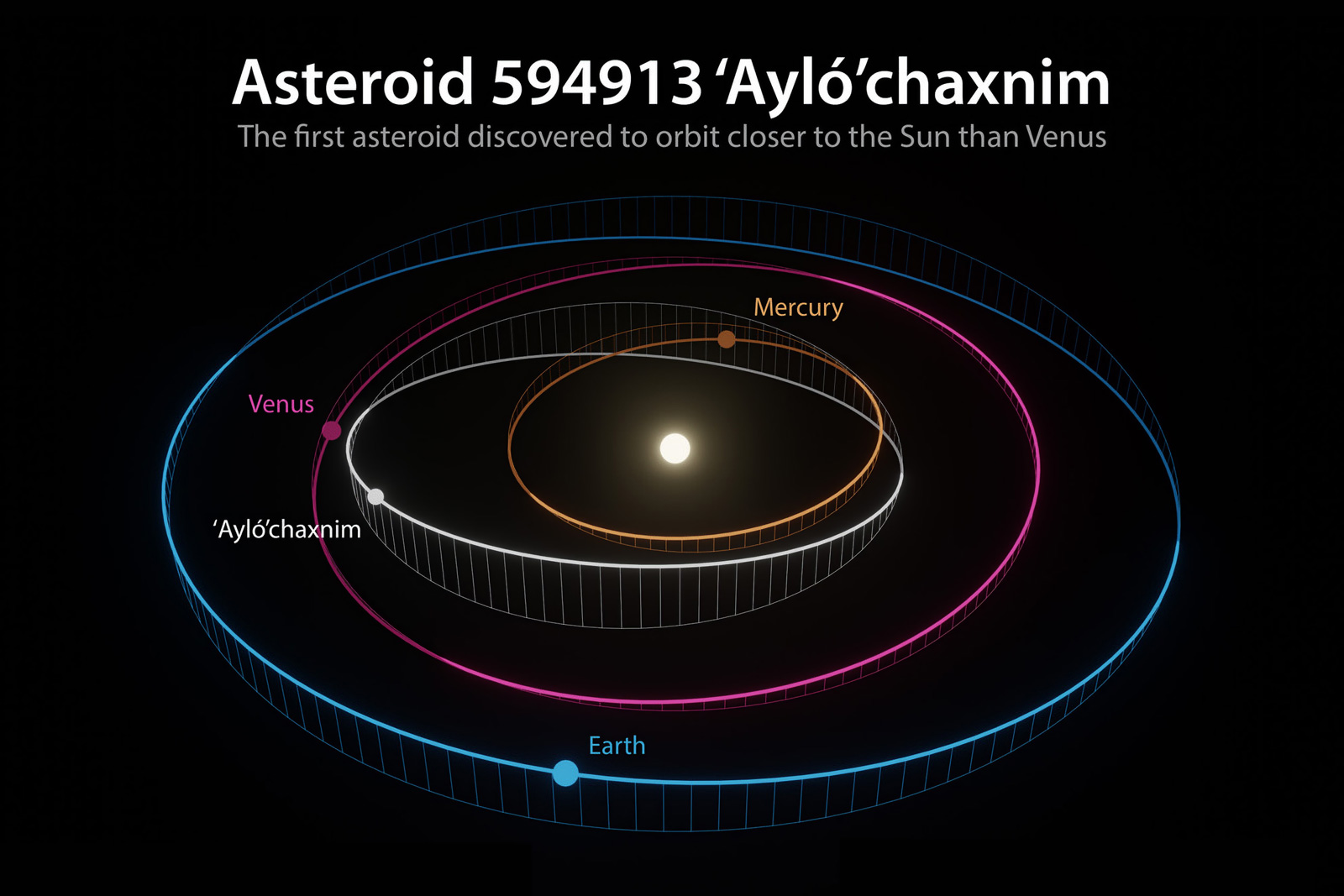
The orbits of Earth, Venus and Mercury, and 'Ayló'chaxnim. Light vertical lines illustrate the 3D orientation of each orbit relative to the main plane of the Solar System. The dots show the exact positions of planets at the time of discovery on January 4, 2020, when both 'Aylóchaxnim and Venus were in the evening sky over Palomar Mountain. (Caltech-IPAC/R. Hurt)
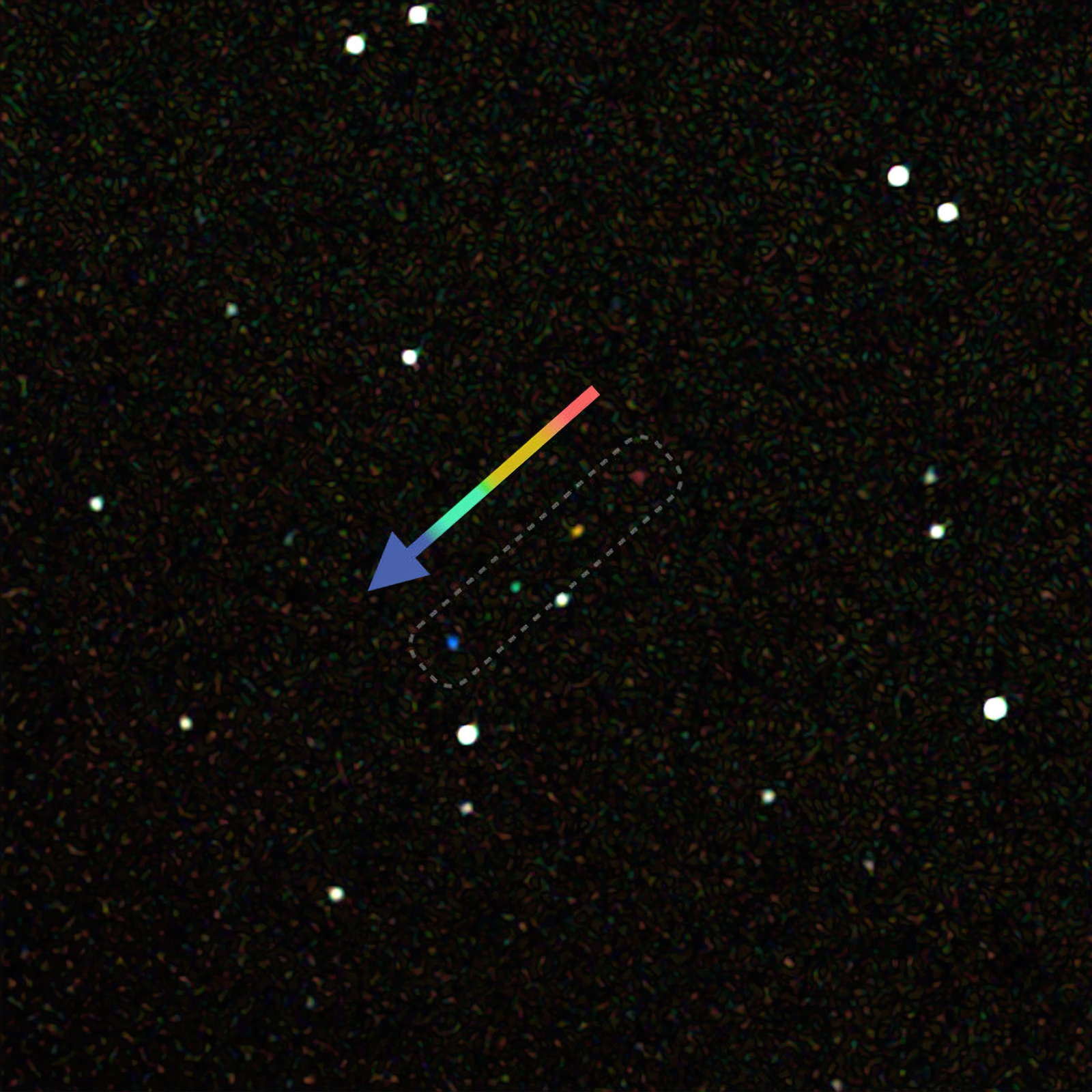
Discovery data. This picture combines data from four different images obtained by Palomar's Zwicky Transient Facility at different times during the night of 4 January, 2020. Each image is assigned a different color (red, yellow, green, and blue) and then added together. The blended light of stationary stars appear white, but the single object moving through the frame—'Ayló'chaxnim—reveals itself as a series of colored dots. (NEOZTF/G. Helou)
The Palomar naming ceremony included blessings, traditional Pauma songs, and a reading of a poem titled Luiseño Songs of the Seasons, which describes how “it will soon be time for the acorns to fall from the trees” when “Venus is rising.” Jonas Zmuidzinas (BS '81), director of Caltech Optical Observatories and Caltech's Merle Kingsley Professor of Physics, addressed the Pauma band at the ceremony:
The systematic study of the night sky is actually a very ancient pursuit. It's easy to understand why—just look up on a dark, clear night, especially at a place like Palomar, and let the magnificent beauty of the night sky fill you with a sense of wonder and awe. Your ancestors, going back many thousands of years, were very skilled at studying the night sky, and used their knowledge to develop calendars, to mark the seasons, and to find their way on journeys. They recognized planets, stars, constellations, and the Milky Way, they had names for them, and told stories about the heavens that handed down their knowledge from generation to generation, much like scientists today write papers about their discoveries. The ancestors of the Pauma band were in fact the first Palomar astronomers, as our friend Ed Krupp, the Director of the Griffith Observatory in Los Angeles, noted in a paper he wrote.
Luiseño cosmogonic stories and astronomy, and the people's relationship with Palomar Mountain and surrounding land, were explored in a Big Eye newsletter article contributed by Palomar Docent Phaedra Hopper.
Asteroid 'Ayló'chaxnim laps the Sun every 151 days while staying entirely within the orbit of Venus. It was discovered in January of 2020 by ZTF's Twilight program, which searches for asteroids at dusk or dawn that are otherwise hard to see due to their orbits close to the Sun. “An encounter with a planet probably flung the asteroid into Venus's orbit,” explained Tom Prince, the Ira S. Bowen Professor of Physics, Emeritus, at Caltech and a co-investigator of ZTF, in a previous Caltech story about the finding. If similar asteroids with orbits that fall entirely within the orbit of Venus are discovered in the future, they will belong to the 'Ayló'chaxnim family of asteroids (the official names of asteroid families derive from the name of the first object found in the class).
George Helou, a ZTF co-investigator and the director of IPAC, an astronomy center at Caltech, says the ZTF team asked the Pauma band to name the asteroid as a “celebration of their language, history, and connection to the night sky.” Patti Dixon, a Pauma band member and a professor of American Indian Studies at Palomar College outside San Diego, says she and her fellow tribe members initially wanted to name the asteroid “Venus's daughter,” but the word was too long in their native Luiseño language to be accepted by the International Astronomical Union (IAU), the official organization that assigns names to celestial bodies. Dixon said she thought the word “daughter” conveyed that the asteroid is a part of Venus, but in the end, they settled on “Venus girl,” or 'Ayló'chaxnim.
The Pauma band, known formally as the Pauma Band of Mission, or Luiseño, Indians, is one of six tribes of native people in the San Diego area that belong to the Luiseño Indian tribe. The ancestral lands of the Luiseño peoples include Palomar Mountain, where Palomar Observatory is based. “Some of the best-tasting acorns, the black oak acorns, can only be found at the top of the mountain,” explains Dixon. “As part of our traditions, we take our burlap sacks to the mountain, gather the acorns, haul and dry them, crush and leech them, and ultimately make a Jell-O-like meal called wíiwish.” “Hunting and gathering are part of our traditions,” she says, “The movement of the stars and Venus are also parts of our traditions. Science can affirm the traditional truths but also show that science will not harm the truths.”
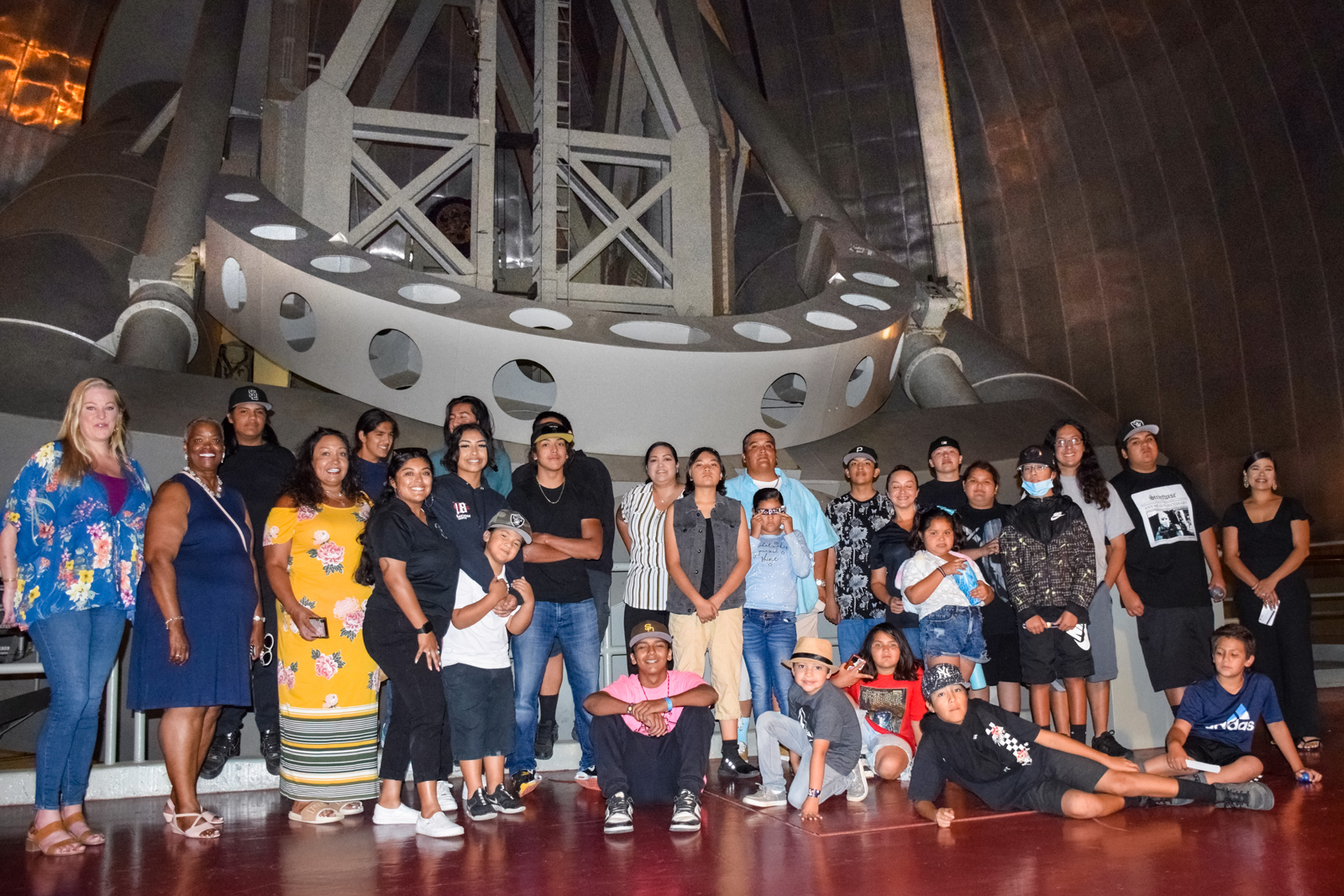
Guests of all ages toured the Hale Telescope prior to attending the main asteroid-naming event. (Palomar/Caltech)
This is not the first time asteroids discovered at Palomar have been named in the Luiseño language. In the late 2000s Jean Mueller, a retired telescope operator who worked at Palomar for 29 years, collaborated with the Pauma band to name three asteroids she discovered (among Mueller’s many discoveries). The three asteroids named after Luiseño gods are: Tukmit (Father Sky), Tomaiyowit (Earth Mother), and Kwiila (Black Oak). A ceremony recognizing this naming was held at the observatory in April 2009.
The asteroid naming and related activities will inspire Pauma children to learn more about science, says Jessica Petri, director of the Pauma band education center. “This event will expose children to the awesome observatory in their backyard," she says.
Questions? We've answered many common visiting, media, and academic questions in our public FAQ page.
Please share your feedback on this page at the
COO Feedback portal.
Palomar Observer 10
Last updated: 23 June 2022 LY/AFB/ACM
